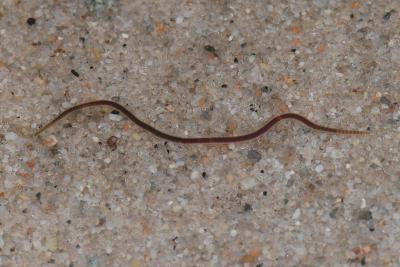Researchers at the University of Gothenburg, Sweden, say they have used DNA analyses to discover that one of our most common segmented worms, Lumbriculus variegatus, is actually two types of worm. Along with some obvious issues in research it also affirms that the variety of species on the earth could be considerably larger than we thought. "We could be talking about a large number of species that have existed undiscovered because they resemble other known species," says Professor Christer Erséus.

'I hate being confused for somebody else' - Lumbriculus variegatus worm. Image: Biopix
The segmented worms that were studied by Erséus, doctoral student Daniel Gustavsson and their American colleague, are identical in appearance. From the very first time that they were described, they have been treated as the same species, and they are also found together in freshwater environments in North America, Sweden and the rest of Europe.
But when the researchers examined the worms using advanced methods for DNA analysis, they discovered that they were in fact two different species. Both species of worm differ in one of the examined genes by 17 percent, which is twice as much as the equivalent difference between humans and chimpanzees.
The research results, which are being published in the journal Molecular Phylogenetics and Evolution, could have consequences; the worms are frequently used for laboratory testing around the world, to examine the effects of environmental toxins.
"Different species have different characteristics. If it emerged that these two species differ in terms of their tolerance towards certain toxins, then it could be difficult to make comparisons between different studies," says Christer Erséus.
And as this advanced DNA technology is tested increasingly within various animal groups, it could, according to Christer Erséus, mean that our perception of the earth's biodiversity may need to be revised. "There could be ten times as many species in total, compared with what we previously thought," he says.
The new species of worm has not yet been given a name, since researchers have not yet decided which of the two will keep the old name, Lumbriculus variegatus.





Comments